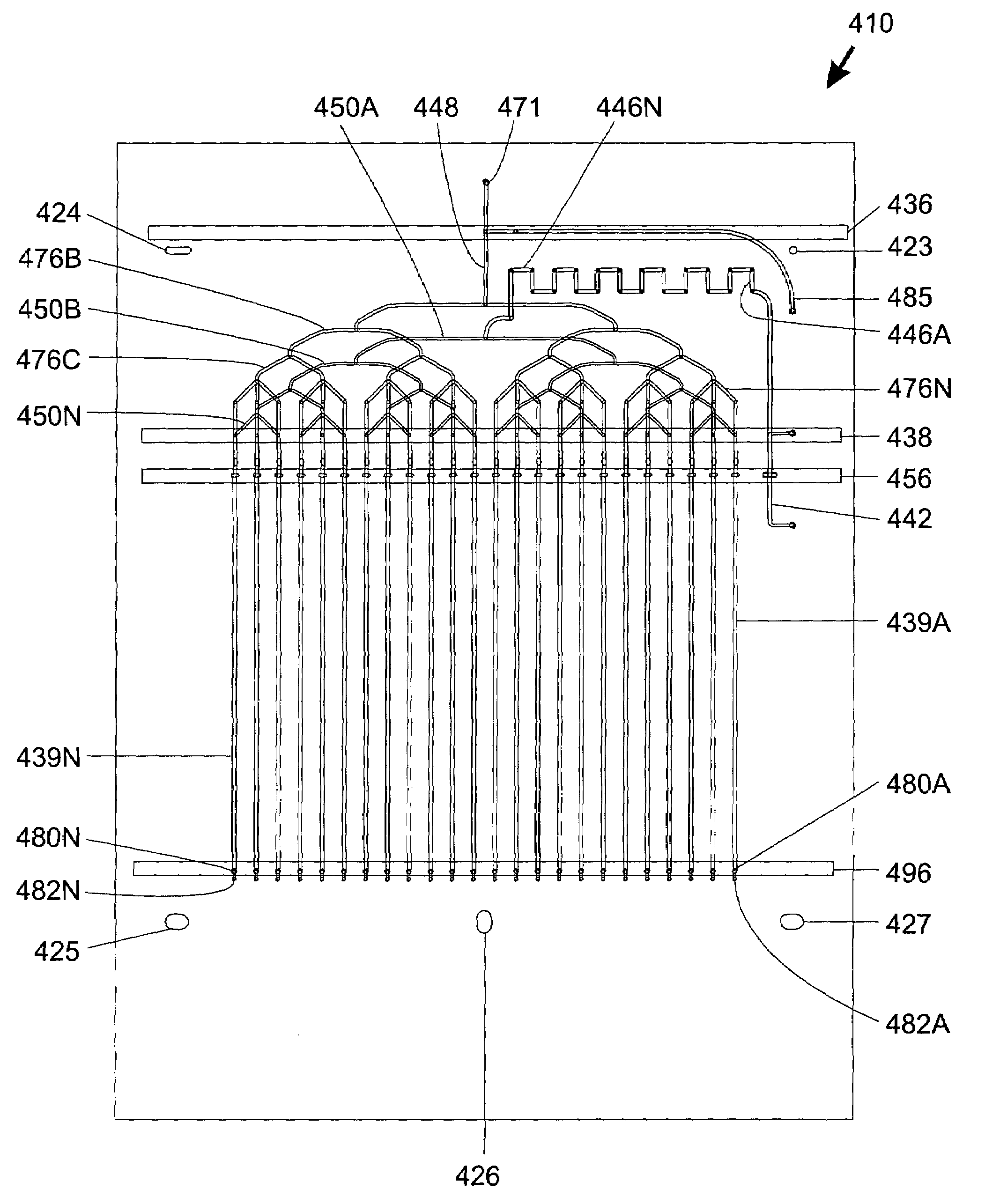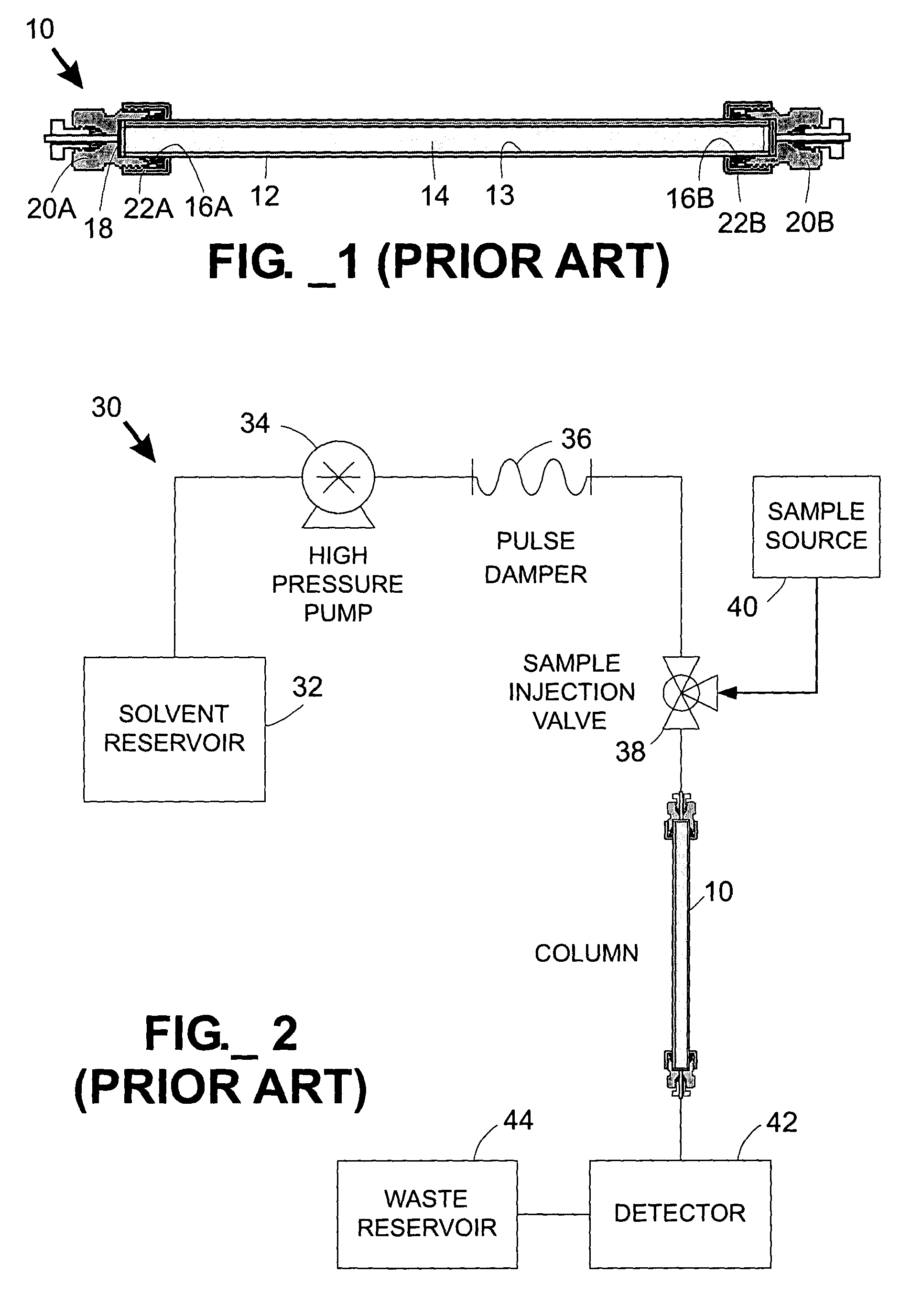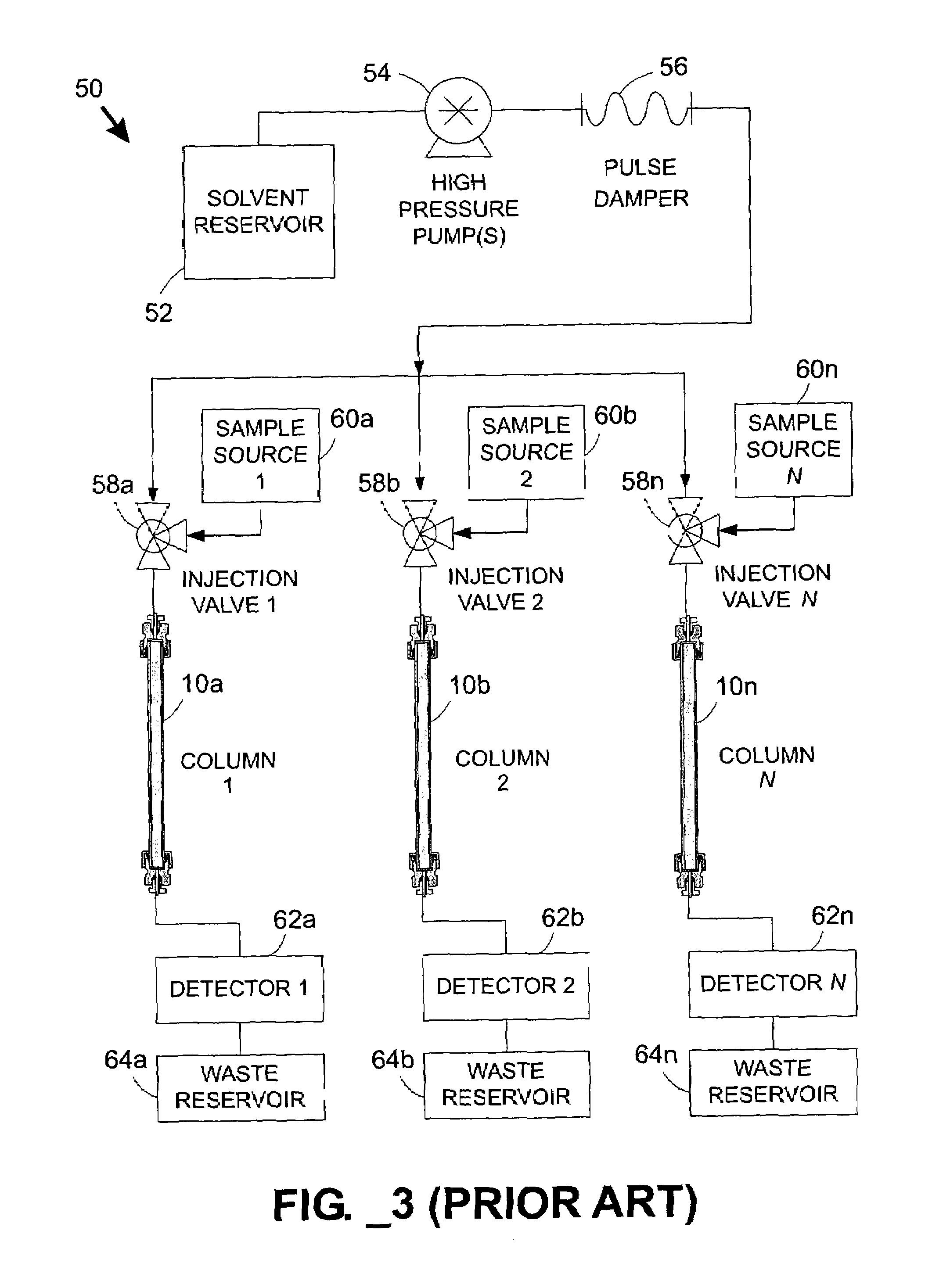Multi-column separation devices and methods
a separation device and multi-column technology, applied in the field of separation columns, can solve the problems of time-consuming flushing or cleaning steps not always yielding a completely clean column, false separation of every subsequent separation, and notoriously slow and laborious methods
- Summary
- Abstract
- Description
- Claims
- Application Information
AI Technical Summary
Problems solved by technology
Method used
Image
Examples
Embodiment Construction
A. Definitions
[0065]The term “batch-processed” as used herein refers to the state of being, or having been, produced in a common operation to impart common characteristics. Batch-processed separation columns containing particulate stationary phase material are preferably packed by supplying stationary phase to each column through a common inlet and a distribution manifold.
[0066]The terms “column” or “separation column” as used herein are used interchangeably and refer to a region of a fluidic device that contains stationary phase material and is adapted to perform a separation process.
[0067]The term “fluidic distribution network” refers to an interconnected, branched group of channels and / or conduits capable of adapted to divide a fluid stream into multiple substreams.
[0068]The term “frit” refers to a liquid-permeable material adapted to retain stationary phase material within a separation column.
[0069]The term “microfluidic” as used herein refers to structures or devices through wh...
PUM
 Login to View More
Login to View More Abstract
Description
Claims
Application Information
 Login to View More
Login to View More - R&D
- Intellectual Property
- Life Sciences
- Materials
- Tech Scout
- Unparalleled Data Quality
- Higher Quality Content
- 60% Fewer Hallucinations
Browse by: Latest US Patents, China's latest patents, Technical Efficacy Thesaurus, Application Domain, Technology Topic, Popular Technical Reports.
© 2025 PatSnap. All rights reserved.Legal|Privacy policy|Modern Slavery Act Transparency Statement|Sitemap|About US| Contact US: help@patsnap.com



